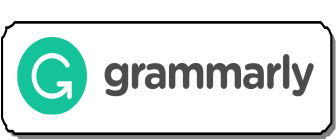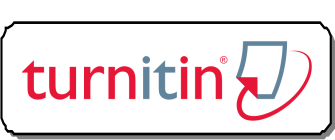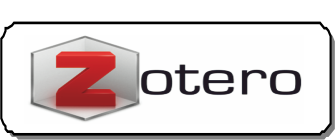Conceptual of Blended Learning as Islamic Education Study Program Learning Reform Action in Digital Era 4.0
Abstract
This article focuses on the conceptual study of the blended learning model. This article also presents several studies from the online journal article and the findings of previous research from thesis and dissertations and textbooks relating to the theory of blended learning. As an effort to reformulate PAI learning, it is important to implement blended learning in the current digital era. Islamic religious education has a material source that is extensive and strategic for the progress of the Indonesian nation. With most Indonesia's population is the follower of Islam, Islamic religious education as millennial generation literacy is appropriate to be formulated under the development of digital technology. Islamic education can take a strategic role as the immunization of the young generation amidst the advancement of learning and innovation. Blended learning is one of them in future learning. Blended learning is one of the latest learning models that has been successfully applied to educational institutions. This study describes blended learning as an effort to reformulate PAI learning in the digital era 4.0. This study also aims to be a reference for further research. This research was conducted with the Systematic Literature Review (SLR) method of various research findings and the findings of journal articles relating to the blended learning. The findings of the study showed that the principle of blended learning synergize a balanced combination between face-to-face and online learning. It can apply blended learning to PAI learning and is quite successful. Using technology will strengthen the conventional methods that commonly occur in PAI learning so that PAI learning is more effective and efficient. Some research states that blended learning has motivated students in learning, enables students to be more creative, more active, more participatory, more communicative, independent and able to solve problems in learning, improving learning outcomes. We can conclude it that the results regarding blended learning are having a positive impact on student development and also on learning outcomes.References
Bawaneh, Shamsi S. “The Effects of Blended learning Approach on Students’ Performance: Evidence from a Computerized Accounting Course.” International Journal of Humanities and Social Science 1, no. 6 (2011).
BeritaSatu.com. “Di Era Industry 4.0, Jepang Sudah Masuk Society 5.0.” beritasatu.com. Diakses 20 Oktober 2019. https://www.beritasatu.com/ekonomi/534519/di-era-industry-40-jepang-sudah-masuk-society-50.
Bersin, Josh. The Blended learning Book: Best Practices, Proven Methodologies, and Lessons Learned. 1 ed., 2004.
Biolchini, Jorge, Paula Gomes Mian, Ana Candida Cruz Natali, dan Guilherme Horta Travassos. “Systematic review in software engineering.” System Engineering and Computer Science Department COPPE/UFRJ, Technical Report ES 679, no. 05 (2005): 45.
Darwanto. Televisi Sebagai Media Pendidikan. Yogyakarta: Pustaka Pelajar Offset, 2011.
Daryanto, dan Syaiful Karim. Pembelajaran Abad 21. Yogyakarta: Gava Media, 2017.
Dwiyogo, Wasis D. Pembelajaran Berbasis Blended learning : Model Rancangan Pembelajaran dan Hasil Belajar Pemecahan Masalah. Malang: Wineka Media, 2016.
Effendi, Hansi. “Model Blended learning Interaktif Berbasis Web Mata Kuliah Mesin-Mesin Listrik di Fakultas Teknik.” Disertasi, Universitas Negeri Padang, 2015.
Fukuyama, M. “Society 5.0: Aiming for a New Human-Centered Society.” Japan Spotlight, t.t., 47–50.
Garrison, D. Randy, dan Norman D. Vaughan. Blended learning in Higher Education, Framerork, Principles, and Guidlines. US San Fancisco: Jossey-Bass, 2008.
Glazer, Francine S. Blended learning . Virginia: Stylus Publishing, 2012.
Hamad, Mona M. “Blended learning Outcome vs Traditional Learning Outcome.” International Journal on Studies in English Language and Literature (IJSELL) 3, no. 4 (2015).
Hie, Bayu Prawira. Revolusi Sistem Pendidikan Nasional dengan Metode E-Learning. Jakarta: PT. Gramedia Pustaka Utama, 2014.
http://nasional.sindonews.com/readperguruan-tinggi-jalankan-kuliah-online. Diakses Kamis, 09-03-2018., t.t.
“https://nasional.tempo.co/read/menristekdikti-wacnakan-pengurangan-fakultas-di-perguruan-tinggi. Diakses Kamis, 16-01-2018.,” t.t.
Ira Wurinanda. Era Revolusi Industri 4.0, Saatnya Generasi Millennial Menjadi Dosen Masa Depan, 2018. http://sumberdaya.ristekdikti.go.id/index.php/2018/01/30/era-revolusi-industri-4-0-saatnya-generasi-millennial-menjadi-dosen-masa-depan/.
Kerres, Michael, dan Claudia De Witt. “A Didactical Framework for the Design of Blended learning Arrangements.” Journal of Educational Media 28, no. 2–3 (Oktober 2003): 101–113.
Bisnis.com. “Making Indonesia 4.0 Tak Kalah Dari Super Smart Society 5.0 | Teknologi.” Diakses 20 Oktober 2019. https://teknologi.bisnis.com/read/20190711/84/1123147/making-indonesia-4.0-tak-kalah-dari-super-smart-society-5.0.
Miarso, Yusufhadi. Menyemai Benih Teknologi Pendidikan. Jakarta: Kencana Media Group, 2004.
Muhaimin, et. al. Paradigma Pendidikan Islam: Upaya Mengefektifkan Pendidikan Agama Islam di Sekolah. Bandung: Remaja Rosdakarya, 2004.
Munir. Pembelajaran Digital. Bandung: Alfabeta, 2017.
Pengembangan Iptek dan Pendidikan Tinggi di Era Revolusi Industri 4.0 – Ristekdikti. Diakses 8 Juli 2018. https://www.ristekdikti.go.id/pengembangan-iptek-dan-pendidikan-tinggi-di-era-revolusi-industri-4-0-2/.
Rusman. Belajar dan Pembelajaran Berbasis Komputer Mengembangkan Profesionalisme Guru di Abad 21. Bandung: Alfabeta, 2013.
Saifuddin, Saifuddin. “Blended learning Sebagai Upaya Revitalisasi Pendidikan Agama Islam Pada Perguruan Tinggi Umum.” VICRATINA 2, no. 1 (Oktober 2017): 70–80.
Sairin, Weinata. Himpunan Peraturan Pendidikan Tinggi. Bandung: Yrama Widya, 2014.
Stacey, Elizabeth, dan Philippa Gerbic. “Teaching for Blended learning Research Perspectives from on-Campus and Distance Students.” Education and Information Technologies 12, no. 3 (1 September 2007): 165–74. https://doi.org/10.1007/s10639-007-9037-5.
Sudjana, Nana, dan Ahmad Rivai. Teknologi Pengajaran. Bandung: Sinar Baru Algensindo, 2003.
Thorne, Kaye. Blended learning : How to Integrate Online and Traditional Learning. USA: Kogan Page Limited, 2003.
———. Blended learning : How to Integrate Online and Traditional Learning. USA: Kogan Page Limited, 2003.
Whitelock, D., dan Jeffs, A. “Editorial for special issue on blended learning : Blending the issues and concerns of staff and students.” Journal of Educational Media 2/3 (2003).
Zaharah Hussin, dkk. “Kajian Model Blended learning Dalam Jurnal Terpilih: Satu Analisa Kandungan.” JuKu: Jurnal Kurikulum & Pengajaran Asia Pasifik 3, no. 1 (2015).
Copyright (c) 2019 SYAMIL: Jurnal Pendidikan Agama Islam (Journal of Islamic Education)

This work is licensed under a Creative Commons Attribution-ShareAlike 4.0 International License.
Please find the rights and licenses in SYAMIL Jurnal Pendidikan Agama Islam (Journal of Islamic Education). By submitting the article/manuscript of the article, the author(s) agree with this policy. No specific document sign-off is required.
1. License
The non-commercial use of the article will be governed by the Creative Commons Attribution license as currently displayed on Creative Commons Attribution-ShareAlike 4.0 International License.
2. Author(s)' Warranties
The author warrants that the article is original, written by stated author(s), has not been published before, contains no unlawful statements, does not infringe the rights of others, is subject to copyright that is vested exclusively in the author and free of any third party rights, and that any necessary written permissions to quote from other sources have been obtained by the author(s).
3. User/Public Rights
SYAMIL spirit is to disseminate articles published are as free as possible. Under the Creative Commons license, SYAMIL permits users to copy, distribute, display, and perform the work for non-commercial purposes only. Users will also need to attribute authors and Register on distributing works in the journal and other media of publications. Unless otherwise stated, the authors are public entities as soon as their articles got published.
4. Rights of Authors
Authors retain all their rights to the published works, such as (but not limited to) the following rights;
Copyright and other proprietary rights relating to the article, such as patent rights,
The right to use the substance of the article in own future works, including lectures and books,
The right to reproduce the article for own purposes,
The right to self-archive the article (please read out deposit policy),
The right to enter into separate, additional contractual arrangements for the non-exclusive distribution of the article's published version (e.g., post it to an institutional repository or publish it in a book), with an acknowledgment of its initial publication in this journal (SYAMIL Jurnal Pendidikan Agama Islam (Journal of Islamic Education)).
5. Co-Authorship
If the article was jointly prepared by more than one author, any authors submitting the manuscript warrants that he/she has been authorized by all co-authors to be agreed on this copyright and license notice (agreement) on their behalf, and agrees to inform his/her co-authors of the terms of this policy. SYAMIL will not be held liable for anything that may arise due to the author(s) internal dispute. SYAMIL will only communicate with the corresponding author.
6. Royalties
Being an open accessed journal and disseminating articles for free under the Creative Commons license term mentioned, author(s) aware that SYAMIL entitles the author(s) to no royalties or other fees.
7. Miscellaneous
SYAMIL will publish the article (or have it published) in the journal if the article’s editorial process is successfully completed. SYAMIL editors may modify the article to a style of punctuation, spelling, capitalization, referencing and usage that deems appropriate. The author acknowledges that the article may be published so that it will be publicly accessible and such access will be free of charge for the readers as mentioned in point 3.












